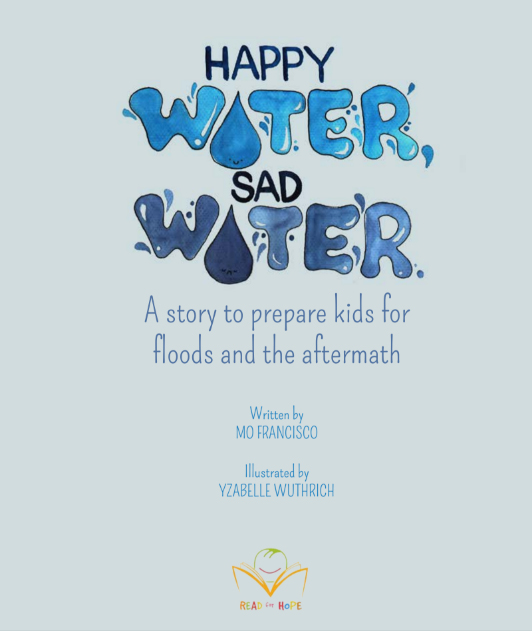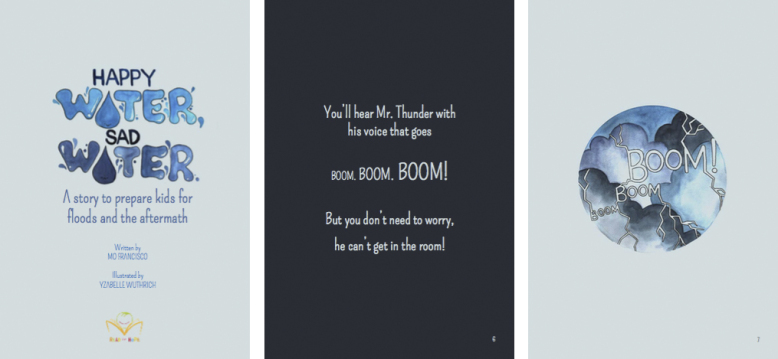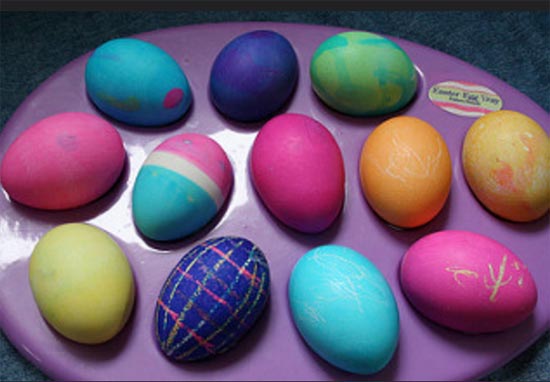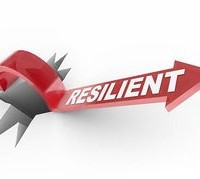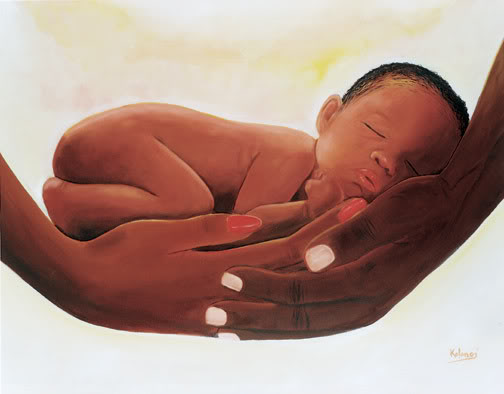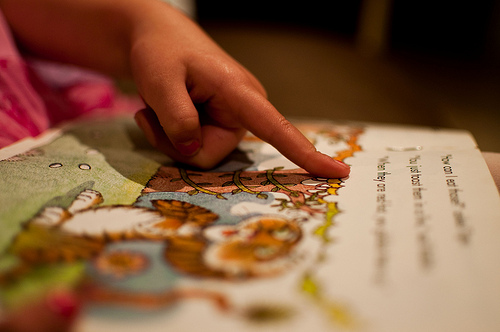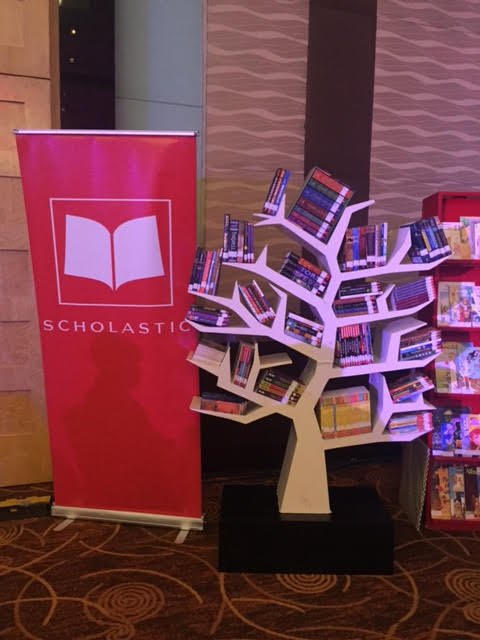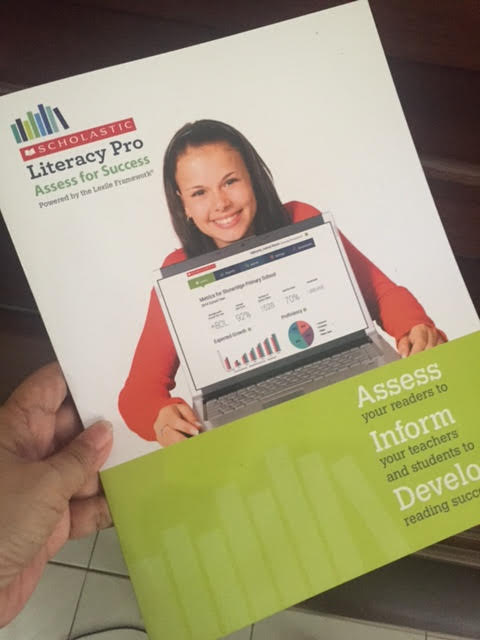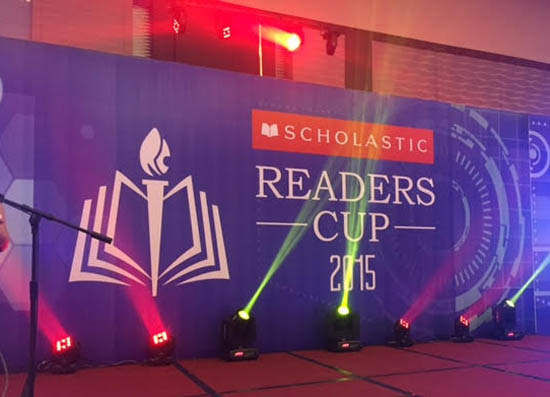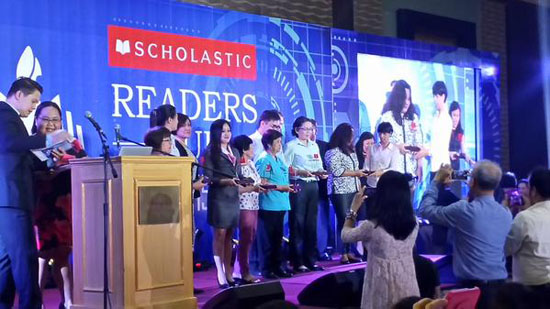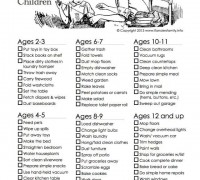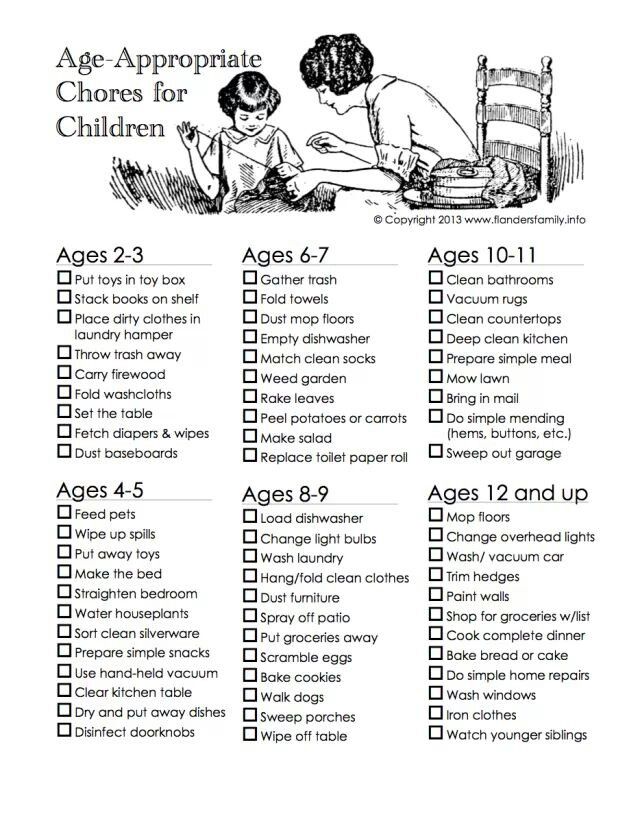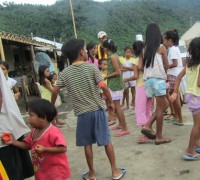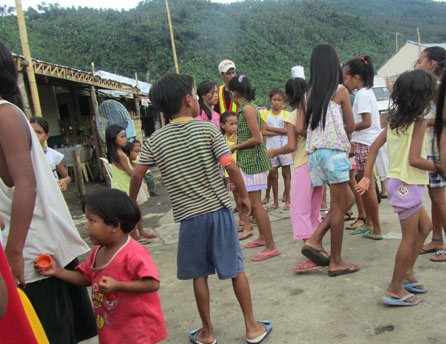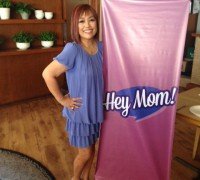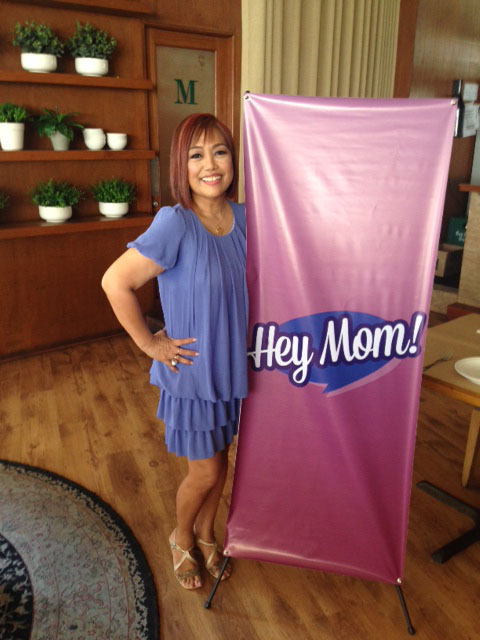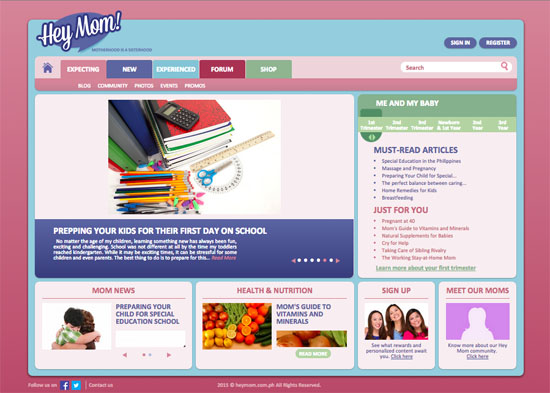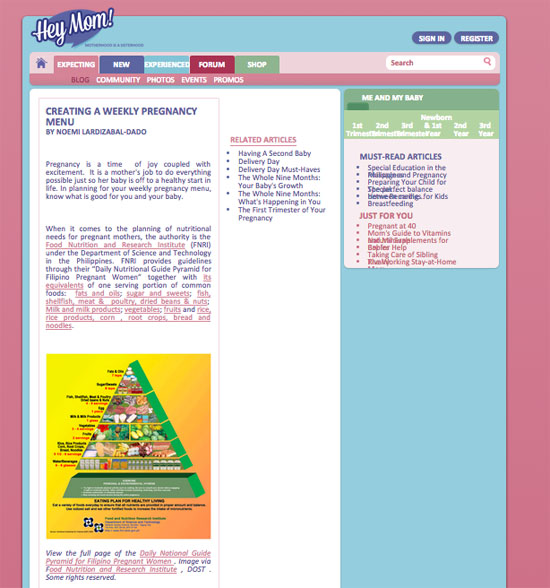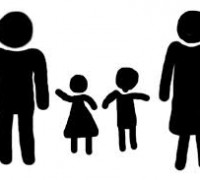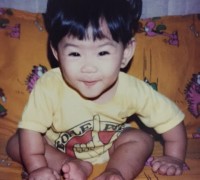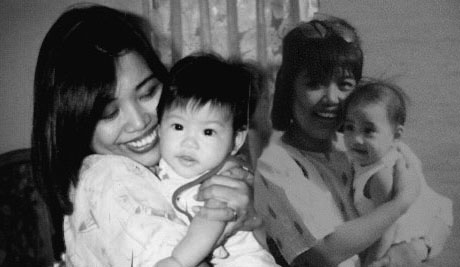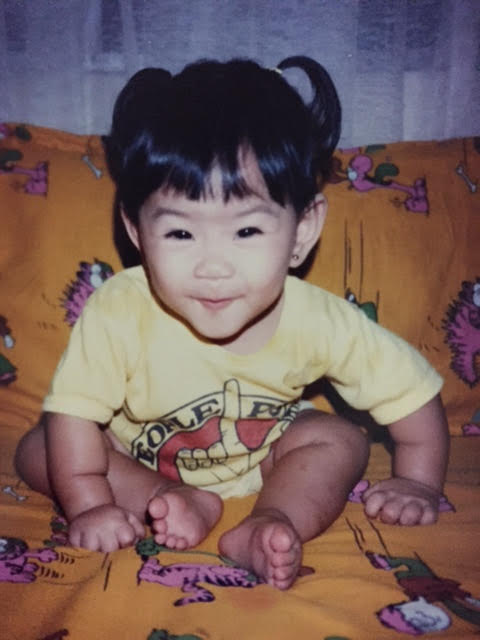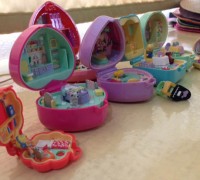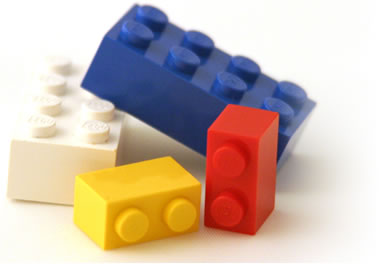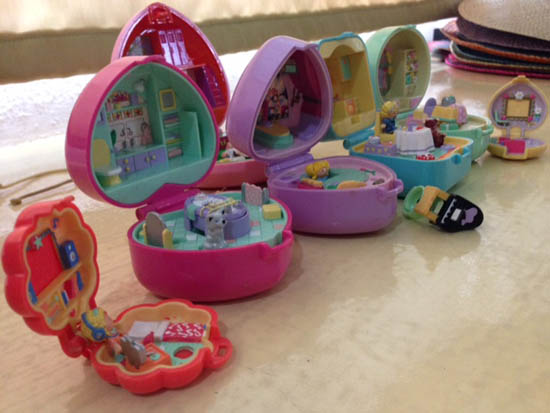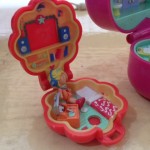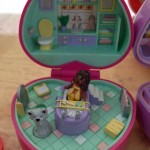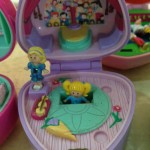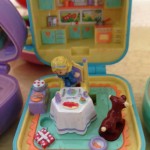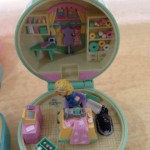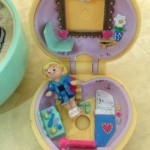by Edel Cayetano as originally posted at Philippine Online Chronicles

Enjoying a stroll at the mall with my bundle of joy.
On several occasions, I’ve read status messages and blog posts from moms about how it’s so
noble to be a stay-at-home mom or a working mom. Stay-at-home moms (and their supporters) resolve into a litany of why they’re better and more selfless than working moms, while working moms think they have a harder time juggling family, career and time for self – three crystal balls that are equally important AND fragile. But really, what’s the deal about competing against each other? Can’t we just all be supportive of our fellow mothers, regardless of their situation?
I’m a new mom, and I take guilt and confusion everyday for breakfast. My journey with my daughter, who turns 8 months old soon, has been nothing short of colorful and challenging. I got a flavor of how it is to be a stay-at-home mom too for a while, and it drove me crazy. During my daughter’s first few months, I was fortunate enough to be able to care for her by myself. It wasn’t easy, especially since I wasn’t used to the routine, having been career-oriented for as long as I can remember, but I’m grateful for it. During the time, my respect for moms who made the difficult decision of leaving their careers in order to care for their kids and their families full time grew. It was selfless, indeed.
…But so is the resolve of working moms to balance both family and career. Pardon me from sharing a tad too much about my own experiences, but working and caring for one’s family is just as hard as being a stay-at-home mom. While stay-at-home moms lament the loss of their careers in exchange for raising their kids, working moms constantly battle with the guilt of not being with their babies as often as they want to. Six months after I gave birth, I went back to my job, and moms like me could attest to how hard it is to be away from home despite knowing that we NEED to do this to ensure the future of our children. Before I went back to work, my husband and I have agreed that we needed to be a double income household, and with the go signal of resuming with my job, we knew that we had to make some major adjustments if we were going to make it work. It has since required a lot of sacrifice (and humbling ourselves enough to ask for help from both our families), but we’re determined and dead set on our goals.
Stay at home mom: You are worthy
A post about stay-at-home moms and their estimated “salary” recently went viral on social media. It was from Steven Nelms, and it was meant as a “sort of thank-you note” for his wife. In his post, Nelms said that fathers can’t afford a stay-at-home mom, if they were to pay for each “service” their wives do for them.
Sharing how it made the most financial sense for him to work and his wife Glory to stay at home for their son Ezra, Nelms wrote the post to let his wife know how much her work at home is worth. In it, he claimed that a stay-at-home mom should make $73,960 (or a whopping 3 million++ in pesos). Half of this estimated amount goes to childcare, while the rest are divided into cleaning costs, personal shopping, cooking and accounting.
Meanwhile, a stay at home wife and mom named Susannah B. Lewis, called for other stay at home moms to “shut the eff up.” “Just be content or quit your whining,” she said, referring to how some stay at home moms “can’t be thankful and instead view life at home with their children as one putrid event after another.”
She also says that if stay at home moms constantly despise being with little people who drool, are completely unsatisfied, miserable and longing for a way out, then it is best if they get a job, volunteer, find a hobby, go out with the girls and just DO SOMETHING. More than that, just be grateful for a faithful husband, gorgeous and healthy children and a beautiful home. And doesn’t she have a point?
Working mom: You are enough
Working mothers, on the other side of the spectrum, also have their share of supporters. Margie Warrell of Forbes wrote a reassuring letter to working moms, telling them to stop feeling so guilty. In her post, she recognized how moms who juggle family and career feel like they’re forever coming up short when it comes to doing enough, giving enough and being enough for their kids, their partners, their aging parents and extended family, and of course their bosses and their communities (that’s apart from doing, being and giving enough for themselves!). Warrell, a working mom herself, shared about how she felt the constant nagging mother’s guilt until she realized that she didn’t have children to spend her life feeling forever inadequate. “I wanted children to enrich my life, not enslave my conscience,” she said.
Working moms like us have as much right to enjoy our kids without having to take child rearing as a long exercise in never measuring up. In her article, Warrell tells working moms to confront the destructive forces that drive mother’s guilt, and practice five key ways to embrace one’s short-falls as a mother – which we all have, regardless if we work or stay at home. These tips will also help refocus a working mom’s preciously finite energy on what truly matters: making sure that the kids feel wanted, loved and loveable no matter what, and benefit from a role model (yes that’s you) on how to live a rewarding life:
- Accept that there will be trade-offs. Combining motherhood and career in any way will have trade-off, sacrifices and compromises. To reconcile these, always remember your reasons for working – money, satisfaction, sanity – to stay grounded on your personal convictions. Remember that your kids, family and even yourself are ultimately all better off because you have a rewarding career outside the home.
- Don’t “should” on your guilt. Refrain from taking on board a mother-load of ‘good-parent’ shoulds that others do. Stop comparing yourself to other mothers and don’t buy into the unspoken ‘rules’ of society. Replace ‘should’ with ‘could’ to take the judgment out of the equation and allow yourself to do what actually works best for you and your family.
- Manage your standards of a ‘great parent.’ Accept that sometimes, good enough is good enough. Don’t get sold on the idealized, photoshopped image of the ‘perfect’ parent and instead, keep in mind that it’s who we are for our children that ultimately impacts them.
- Beware of guilt mongers. Be so interested in doing your best for your kids and your family that you have no time to throw stones at how other parent their children. Likewise, steer clear from the guilt mongers.
- Don’t dilute your presence with distraction. It’s true when they say that we can be with our kids 24/7 and yet never be fully present to them. If it calls for quality time with the people who matter most to you, turn off to work and other distractions. And yes, that includes putting down your smart phone.
Whether you are a stay at home mom or a working mom, your decision has its own joys and challenges, its own set of pros and cons. There is no monopolized set-up on what works best in terms of mothering our children, and there shouldn’t be. Why don’t we just drop the debate on who’s better and celebrate being the best moms we can be to our kids?
*Photo owned by the author.
